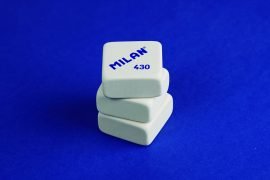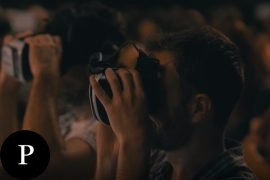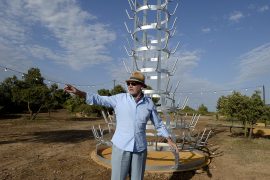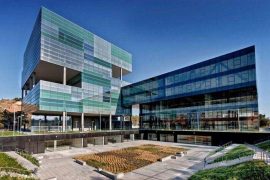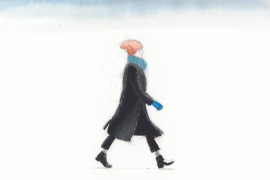[dropcap letter=”T”]
he human species”, wrote Julian Huxley in 1957, “can, if it wishes, transcend itself”. This is a definition of transhumanism (TH) whose conciseness hides a multiplicity of sources. Today, the essential promise of transhumanism, going beyond the human species, is backed by scientific advances that were inconceivable a century ago: biomedicine, artificial intelligence, nanotechnology and neuroscience combined, to offer the emergence of a superior humanity as a mere matter of time. The TH program counts among its participants talented scientists. However, not everyone believes that this program is possible, or even desirable, and TH critics include scientists and philosophers equally respected. It is not a question here of finding out who is right, but only of suggesting that both the promises offered by the TH and the objections presented against pushes us to reflect on the very foundations of our condition and on our role in the world.
TRANSHUMANISM AND TECHNICAL PROGRESS
Although TH appears inextricably linked to technical progress, not all advances in technology are oriented towards the objective of the program. It is therefore appropriate to distinguish three levels of relationship between technical progress and the TH itself: that of medical engineering and biomedicine; that of cognitive psychology and neuroscience and a third level, more speculative, that sets as a goal a new relationship between machines and men that gives rise to a higher consciousness. It is not necessary to highlight here the enormous progress made in the first level, whether it is to improve medical diagnoses, to treat diseases or even prevent their appearance, and to increase the perception, mobility or ease of interaction of disabled people. The goal of these developments is, like that of conventional medicine, to improve the quality of life and expand the capabilities of today’s humanity rather than transcend it; therefore, the relationship between these disciplines and the TH program is tangential, although it is legitimate to think of beneficial reciprocal relationships. In no case are some “radical alterations in the nature and possibilities of our lives” what defines, according to Max More, the core of the TH program.
 Disciplines such as artificial intelligence (AI), cognitive psychology or neuroscience are closely related to each other. According to them, what differentiates man from the rest of creation is his brain, considered a product, like the entire creation, of a process of evolution that combines fortuitous alterations and adaptations to changing circumstances. From this consideration of man, it follows that the knowledge of the specifically human is achieved through the study of his brain. A colossal project, the Brain Activity Map, part of the Brain project launched by the White House in 2013, aims to identify, at a neuronal level, all the activities of the human brain: perception, action, cognition. On the other hand, the exponential growth of computer techniques and the possibilities of connecting the brain with calculation tools allows us to imagine a superman who uses the progress of biomedicine to keep his body in shape while his brain has a capacity mental -processing information and calculation- superior to that of Deep Blue, the computer that beat Kasparov playing chess; superior, and in the process of constant improvement. In the third level of relationship between technology and humanity, the one drawn by Raymond Kurzweil in The Age of Spiritual Machines (1998), computer and brain are joined by cybernetic implants, man and machine are inextricably linked, and a new intelligence takes control of the universe.
Disciplines such as artificial intelligence (AI), cognitive psychology or neuroscience are closely related to each other. According to them, what differentiates man from the rest of creation is his brain, considered a product, like the entire creation, of a process of evolution that combines fortuitous alterations and adaptations to changing circumstances. From this consideration of man, it follows that the knowledge of the specifically human is achieved through the study of his brain. A colossal project, the Brain Activity Map, part of the Brain project launched by the White House in 2013, aims to identify, at a neuronal level, all the activities of the human brain: perception, action, cognition. On the other hand, the exponential growth of computer techniques and the possibilities of connecting the brain with calculation tools allows us to imagine a superman who uses the progress of biomedicine to keep his body in shape while his brain has a capacity mental -processing information and calculation- superior to that of Deep Blue, the computer that beat Kasparov playing chess; superior, and in the process of constant improvement. In the third level of relationship between technology and humanity, the one drawn by Raymond Kurzweil in The Age of Spiritual Machines (1998), computer and brain are joined by cybernetic implants, man and machine are inextricably linked, and a new intelligence takes control of the universe.
The algorithms will be responsible for carrying out many of our tasks, because even the most creative works have many elements of routine, and all that can be done by a computer better than by a human being
EXPONENTIAL ALGORITHMS
It is idle to speculate on whether the TH’s promises can materialize. It is preferable that we ask ourselves if that program, when feasible, would mean transcending human nature as we know it. What does the program offer, essentially? An extraordinary development of the calculation capacity. Computers that are not only capable of assimilating huge amounts of data of all kinds, and following increasingly complex sets of instructions, but also of generating new instructions themselves -what we call algorithms- without human intervention, in such a way that their capacities grow, as Kurzweil affirms, at an exponential rate. There is no doubt that these algorithms will be responsible for carrying out many of our tasks, because even the most creative works have many elements of routine: you have to review the texts once they are written; a complex demonstration must be proven; scientific experiments follow very rigid protocols that demand an exact repetition, and all that can be done by a computer in a better way than by the human being who writes, discovers or experiences. McKinsey estimates that, although less than half of current jobs can be filled by machines, 95% of the tasks that define a job are. A computer will be able to foresee what we will do tomorrow better than ourselves, because our ordinary behaviour is largely made up of routine habits, many of them unconscious. The chess championships will cease to exist, instead there will be competitions between machines: when they asked a great Dutch master how he would face Deep Blue, he answered: “With a hammer”.
KNOWLEDGE AND HUMAN NATURE
But all that leads to think about a change in human nature, or is it just more -even much more- of the same? In other words: the TH offers, basically, the possibility of expanding our information processing capacity. But are we sure that our mind is just a very complex architecture of algorithms, of computer programs? Are we sure that knowing is, in its essence, calculating? The defenders of the AI in its most radical version say yes, but scientists, philosophers or even artists -which are no less solvent- do not agree. The objections of Roger Scruton are very solid. If there is more to calculate in the activity of knowing, what can it be? The ancients spoke of intellectual intuition, which manifests itself in that intimate conviction that once many will have felt that something is true before reason -the computer- confirms it; an intuition that, for traditional thinking, was the manifestation of a direct link between human consciousness and reality. There are many well-known examples of this intuition: that of the mathematician Henri Poincaré, who, at the time of boarding a bus, knew he had found a solution to a problem he had been working on for some time, certainty that he confirmed when he came back from his excursion; the testimony of Mozart, who saw one of his works as a whole, and not as a succession of scores; in the field of rigor par excellence, that of mathematics, Hadamard says that invention is governed by the sense of scientific beauty, and the mathematician Roger Penrose states that “a theorem, before we can prove it, we must have seen”.
There are many examples that suggest that our mind has a non-algorithmic part, that is, unattainable for any computer. These are only examples, and a follower of the TH may not grant them any validity; in these moments it is enough that those who do not like the perspective of a transhumanity know that there are serious reasons to question their possibility. “I am a small world, subtly formed / of elements and an angelic spirit”. This allows to think that this “angelic spirit” is not only specifically human, but that it must remain outside the TH program forever.
THE NEED TO TRANSCEND
All human activity has a purpose: nothing serious is done just because. Mallory’s phrase when asked why he wanted to climb Everest: “Because it’s there” is an ingenious way of not answering. When observing the TH we can ask ourselves what is its objective and speculate, with due circumspection, on what the motives of its participants may be. At first glance, the declared objective of the TH, going beyond the human species of today, seems to respond to a longing as humanity itself: the search for transcendence, something, or someone, who is above man and attracts him: for some, that yearning expresses itself as the search of the being, of the “really real” that is hidden behind the veil of appearances; for others, it is a question of coming to contemplate the face of the deity, of recreating oneself in his love, of merging with it. For others, who consider themselves exiled in our world, it is simply a question of finding the path that will take them to their true home. Different ways of expressing something that escapes the language, paths that start from distant points to reach the same place. In our culture, the most common form of that longing is the desire for salvation, and religion the most familiar -though not the only- way to reach it. How many of our great works are salvation stories! The Divine Comedy, the sacramental autos, the tragedies of Shakespeare, Goethe’s Faust, even our modest Don Quixote: “I already have free and clear judgment, without the caliginous shadows of ignorance”, he shouts on his deathbed.
We already see, however, that we are facing different concepts of transcendence: the TH, with the theory of evolution as a starting point, considers the longing for something transcendent to man and creation as a residue of the primitive ignorance of the species; although it admits that it fulfilled a function reassuring man and favouring social cooperation, scientific knowledge considers that desire is not only false, but above all unnecessary. Only what is accessible to scientific knowledge is real. Those questions about the meaning of existence, or the reason for the existence of the world -questions that men recall obstinately and that science cannot answer because they are not in its territory-, many scientists often consider them as meaningless, “idols of superstition and imposture”, in the words of Francis Bacon. Others offer circular answers: “The meaning of our existence is the epic of the species”, writes the biologist E. W. Wilson.
Therefore, the TH program appears as a transcript, an inversion of the search for true transcendence: transhumanity is only a stage in the evolution of a universe always determined by the same laws. There is no true transcendence because there is no solution of continuity: nature does not jump, said Linnaeus. Of course, the program of transhumanism has a great incentive for its participants: it does not need the help of anyone. It does not expect anything, or fear anything from anyone, it does not owe anything to anyone. It is man alone, master of his destiny, who decides to go beyond himself: “We are in an exalted position, we have become the mind of the biosphere: our spirits are capable of imaginative jumps more and more breathtaking”, writes Wilson. Manifestations like this make us suspect the presence, in the ideological composition of the TH, of a bit of that substance that is so difficult to separate from the human condition: pride. Let’s conclude, then: transhumanism is human, yes, perhaps all too human.

